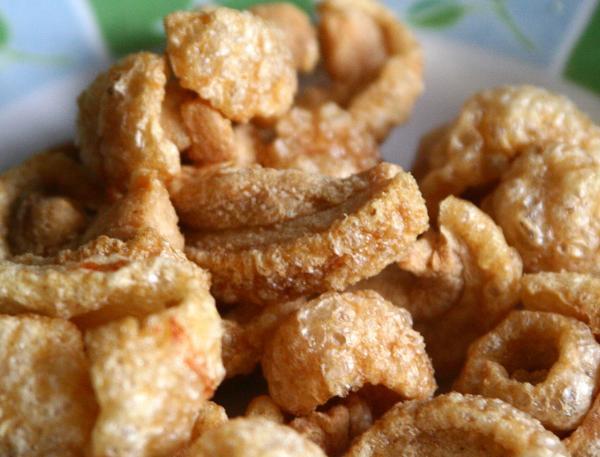CDO Attractions
Cagayan de Oro Tourist Attractions
GASTON PARK
Named after the first Mayor of Cagayan de Oro, Segundo Gaston; located near the Saint Augustine Cathedral and Archbishop’s Palace. This park was the center of town when Pueblo de Cagayan was first erected in 1624. This plaza served as the training ground for the local revolutionaries who were preparing for the Phil-American War in 1900.
MUSEO DE ORO & XAVIER UNIVERSITY
Located at Corrales Avenue; exhibits repertoire of Bukidnon and Maranao Cultures that have survived the ravages of time.
GOLDEN FRIENDSHIP PARK
Stretches along the city's commercial district featuring the monuments of national heroes like Jose Rizal, Andres Bonifacio and Ramon Magsaysay. Underneath the Bonifacio monument are the bones of patriots who perished in the Battle of Agusan against the Americans on May 14, 1900. The City Bandstand serves as a venue for community affairs.
CATANICO FALLS
Located about 10 kilometers away from the city. The falls drop into a swimming pool where bathers could dive from where the water descends; concealed by huge boulders and covered with ferns and moss.
SEMINARY HILL
Located in the southeastern portion of the city is the San Jose Seminary, the training center for aspiring priests; also the site of the Carmelite Nunnery housing the Miraculous Infant Jesus.
PELAEZ SPORTS CENTER
Located along A. Velez St., offers sports facilities, including an Olympic-sized swimming pool; site of the first Palarong Pambansa outside Metro Manila in 1975.
MALASAG NATURE TRAIL
Panoramic Scenery; 10 minutes drive from Cagayan de Oro to Malasag Reforestration Area. One has to negotiate existing asphalted road of about 3 kilometers from the highway up to the 300 year Balete Tree landmark near the Mahoganao Reservoir. Along this route, one can already have a panoramic view of the Betania Retreat House; the sitio of Malasag and the City of Cagayan de Oro. This trip can be accomplished in one day.
GARDENS OF MALASAG ECO “TOURISM VILLAGE“
Situated in Sitio Malasag, Cugman; a rolling terrain in the slopes of reforestration area 20 minutes from the city center. A culturalvillage in a botanical garden setting, it showcases the tribal practices & crafts of the Mindanao tribes. The village also serves as the learning center for ecotourism, ethnic arts, flora and fauna endemic to Northern Mindanao while at the same time generate revenues and livelihood for the tribal groups . The village has a souvenir shop of ethnic products; ; tribal houses of the Talaandigs, Higao-non, Subanon, Maranaos and Ifugaos. It also features rows of cozy guest cottages; camp ground, swimming pool , picnic shed, orchidarium, mini garden, restaurant, butterfly garden, multi purpose hall. It offers the view of Macabalan Bay and hills of Malasag. Available transport : jeepneys, taxis and motocycles (habal-habal)
BULUA STONEWARE
Located at Barangay Bulua; handcrafted home and office decors, household wares and giftables are available for local & export.
PALALAN WATERFALLS
Situated some 7.0 kilometers from sitio Palalan, brgy. of Tablon. It is surrounded by boulders and stones dubbed by the city as Oro stone similar in characteristics with the Mangima Stone. It has 3 step of falls at approximately 50 meters apart with the upper portion ( the source ) , as the biggest of the three.
MIGTUGSOK FALLS
Migtugsok, a sitio of Cugman, Cagayan de Oro City is a place that could be reached via Barangay Indahag. It is accessible by car via Indahag to Kamakawan where one has to walk for 45 minutes along a winding, descending sloping trek of an estimated distance of 400 feet, passing along the converging shallow river of Bigaan and Migtugsok. The river convergence is more or less 20 meters in width. Another 30 minutes trek was made before reaching the falls using the river. The falls is composed of five beautiful cascading waters, where the beauty of nature could still be experienced, unexploited by the carelessness of human search for progress and development.
MONIGUE CAVE
Located in Barangay Mambuaya this city; the cave entrance has flowing water from an underground stream. The cave has a small opening that looks too narrow to be passable, it has a six (6) inches airspace between ceiling and water that one has to submerge one by one at a time, equipped with a helmet and a waterproof cap lamp. The cave contains beautiful sparkling formations which is called the CALCIUM CARBONATE (CaCO3) or CALCITES. These stalactites and stalagmites, white and brown, are signs of oxidized materials that take 50-60 years to form an inch. The cave is definitely spellbinding. There are formations of flowstones, gurpool-resembling rice terraces, transparent crystals and picturesque speleothems, such as cathedral drapes and icons. Everything is simply beautiful and awesome.
MACAHAMBUS HILL CAVE AND GORGE
This was the site of famous Battle of Macahambus Hill which took place on June 4, 1900, the first Filipino victory against the Americans. The cave itself is a picturesque spot. Today, its short cavern leads to a veranda that overlooks the meandering Cagayan River below. 200 meters away is the Macahambus Gorge. This was actually the steep precipice where the enemy forces fell to their deaths. Today, a flight of over a hundred steps leads one down to the floor of the gorge where there is an underground river that comes out from one cave to another cave . The cave is covered with a lush tropical forest growth.
HULUGA CAVE
On the south end of the city, (about eight kilometers south) is Huluga Cave. Composed of two main caverns, it is situated on the eastern side of Cagayan River, along the brow of a vertical limestone cliff. The Skeletal fragments from these caves were found to belong to a child and a woman who inhabited Cagayan 1,600 years B.C. This was based on the acid racemization done by Scripps Institute in La Jolla, California.
Source: Department of Tourism


.jpg)